Popular categories
Looking for a yarn?

100% Wool
from 2.60 $ /50g
The yarn cost is calculated from the pattern’s smallest size and the yarn’s cheapest product type. Looking for an even better price? You might find it on the DROPS Deals!
Daphne Cardigan
DROPS jacket in ”Alaska” with English Rib and raglan finish. Size: S to XXXL
Size: S - M - L - XL - XXL - XXXL
Measurements on diagram may seem small but English rib is very elastic do knit the size you normally knit.
Finished measurements at chest: 32 ¼"-33⅞"-37"-41"-45 ¾"-50⅜"
Full length: 20½"-21 ¼"-22"-22 ¾"-23⅝"-24⅜"
Materials: DROPS Alaska from Garnstudio
650-750-800-850-950-1050 g color no 03 light gray
DROPS circular needles (80 and 40 cm [31½" - 15¾"]) size 5 mm [US 8] – or the needle size needed to obtain correct knitting gauge.
DROPS dark buffalo horn button, no 535: 6-7-7-7-7-8 pcs
-------------------------------------------------------
Alternative Yarn – See how to change yarns here
Yarn Groups A to F – Use the same pattern and change the yarn here
Yarn usage using an alternative yarn – Use our yarn converter here
-------------------------------------------------------

100% Wool
from 2.60 $ /50g
The yarn cost is calculated from the pattern’s smallest size and the yarn’s cheapest product type. Looking for an even better price? You might find it on the DROPS Deals!
- English (US/in)
- Česky - not translated
- Dansk
- Deutsch
- Eesti keel - not translated
- English (UK/cm)
- Español
- Français
- Íslenska - not translated
- Italiano - not translated
- Magyar
- Nederlands
- Norsk
- Polski
- Português
- Suomi
- Svenska
- English (UK/cm), Bulgaria
- English (UK/cm), Croatia
- English (UK/cm), Greece
- English (UK/cm), Latvia
- English (UK/cm), Lithuania
- English (UK/cm), Romania
- English (UK/cm), Slovenia
- Česky, Slovakia - not translated
Pattern instructions
English rib: Knit English rib as follows:
1st row (RS): * K1, P1 *, repeat from *-*.
2nd row back and front pieces: *P1, yo, slip 1 sts as if to K*, repeat from*-*.
2nd row sleeve: *Yo, slip 1 sts as if to K, P1*, repeat from*-*.
3rd row: *K1, P tog yo and lose sts from last row*, repeat from *-*.
Continuing, repeat 2nd and 3rd rows.
Garter st: Knit all rows.
Decreasing tip (applies to raglan):
Dec as follows from RS:
Start 2 sts before sts with marking thread: K2 tog, K1 (marking thread or stitch marker placed in this sts), slip 1 st as if to knit, K1, psso. NOTE: Due to English rib it will sometimes be YO and lose sts from previous row that is bind off. Yo and lose sts are then counted as 1.
Buttonhole: Bind off for buttonhole on right front band. 1 buttonhole = bind off 3rd sts on front band. On next row cast on 1 new sts over bind off sts.
Bind off for buttonhole when piece measures:
Size S: 2, 10, 19, 27 and 36 cm [3/4"-4"-7½"-10⅝" and 14 ¼"].
Size M: 2, 10, 17, 24, 31 and 38 cm [3/4"-4"-6 ¾"-9½"-12 ¼" and 15"].
Size L: 2, 10, 17, 25, 33 and 40 cm [3/4"-4"-6 ¾"-9 ¾"-13" and 15¾"].
Size XL: 3, 11, 18, 26, 34 and 41 cm [1⅛"-4⅜"-7"-10 ¼"-13⅜" and 16⅛"].
Size XXL: 3, 11, 19, 27, 35 and 43 cm [1⅛"-4⅜"-7½"-10⅝"-13 ¾" and 17"].
Size XXXL: 2, 10, 17, 24, 31, 38 and 45 cm [3/4"-4"-6 ¾"-9½"-12 ¼",15" and 17 ¾"].
Bind off for last buttonhole on neck edge after sts are knit up around neck.
Back and front pieces: Knit piece back and forth on circular needles from mid front. Cast on 165-180-198-216-240-264 sts (includes 5 edge sts on each side mid front) on needles size 5 mm [US 8] with Alaska. Then knit as follows (1st row = RS): 5 front edge sts (K these on each row until completed measurement), * K2, P1 *, repeat from *-* and finish with the 2 K and front edge sts. Continue with K over K and P over P until piece measures 4-4-4-5-5-5 cm [1½"-1½"-1½"-2"-2"-2"]. Remember to bind off for button holes – see explanation above. Now knit 2 rows garter sts at the same time as dec 26-33-39-41-45-49 sts on 1st row evenly = 139-147-159-175-195-215 sts (do not dec on front edge sts).
Continue in English rib – see explanation above - until complete measurement. Remember knitting gauge! When piece measures 31-32-33-34-35-36 cm [12 ¼"-12½"-13"-13⅜"-13 ¾"-14 ¼"] knit next row as follows: 5 front edge sts, 28-30-33-37-42-47 sts English rib as previously, bind off 8 sts (= armhole), 57-61-67-75-85-95 sts English rib as earlier, bind off 8 sts (= armhole), 28-30-33-37-42-47 sts English rib as earlier and 5 front edge sts = 123-131-143-159-179-199 sts in total on needle. Leave piece to one side and knit sleeves.
Sleeve: Knit piece back and forth on needle. Cast on 44-47-50-53-56-56 sts (incl 1 edge sts on each side) on needle size 5 mm [US 8] with Alaska. Knit Rib K2/P1 with 1 edge sts on each side until piece measures 3-3-3-4-4-4 cm [1⅛"-1⅛"-1⅛"-1½"-1½"-1½"]. Now knit 2 rows garter sts at the same time as dec 6-7-8-9-10-10 sts on 1st row evenly = 38-40-42-44-46-46 sts. Continue English rib to finished measurement. When piece measures 6 cm [2⅜"] inc 1 sts on each side on every 4 -4 -4 -3.5- 3.5 -3 cm [1½"-1½"-1½"-1 ¼"-1 ¼"-1⅛"] 11-11-11-12-12-13 times in total = 60-62-64-68-70-72 sts (knit new sts into English rib continuously). When piece measures 48-48-48-47-47-47 cm [19"-19"-19"-18½"-18½"-18½"] bind off 5 sts on each side = 50-52-54-58-60-62 sts left on row. Leave piece to one side, knit another sleeve.
Yoke: Slip sleeves onto same circular needle as back and front pieces where sts are bind off for armhole = 223-235-251-275-299-323 sts. Insert 1 marking thread or stitch marker in all transition between sleeve and back and front pieces. (Insert marking thread or stitch marker in first and last sts on sleeve) = 4 marking threads or stitch marker. Knit 1 round English rib as earlier, but knit stockinette sts over 3 sts in each transition between back and front pieces and sleeves (i.e. with marking thread or stitch marker being the middle sts of the 3 sts stockinette sts). Continue as follows at the same time as starting dec for raglan: Dec 1 sts on each side of 3 stockinette sts (= 8 dec) – read Decreasing tips. Dec on every 4th row 7 times and on every 2nd row 11-12-13-15-16-17 times. At the same time when piece measures 43-45-47-48-50-52 cm [17"-17 ¾"-18½"-19"-19 ¾"-20½"] slip 6-6-7-8-8-12 sts mid front on 1 thread or stitch holder for neck. Continuing bind off 2 sts 2-3-4-4-7-7 times to shape neckline and 1 sts 4-3-2-3-0-0 times. At completion of all dec for raglan there are 51-53-57-61-71-79 sts left on row. Piece measures approx 52-54-56-58-60-62 cm [20½"-21 ¼"-22"-22 ¾"-23⅝"-24⅜"] to shoulder.
Neck: Pick up 1 sts from RS in each sts (incl sts on thread or stitch holder) on front piece where sts are bind off for neck = 79-83-91-99-115-131 sts. K1 row from WS at the same time as dec 3-5-11-13-27-39 sts evenly = 76-78-80-86-88-92 sts. Knit 6 rows garter sts – see explanation above - at the same time, on 1st row bind off for 1 buttonhole above the others on right front edge. Bind off loosely.
Assembly: Sew tog sleeve seams within 1 edge st. Sew openings under arms.
Sew in buttons.
Belt: Cast on 10 sts on needle size 5 mm [US 8] with Alaska. Knit garter sts but slip first stitch on each row as if to knit and P last sts on each row (this is done to ensure a neat edge). When belt measures approx 170 to 200 cm [66"-80"] bind off loosely.
Diagram
All measurements in charts are in cm.
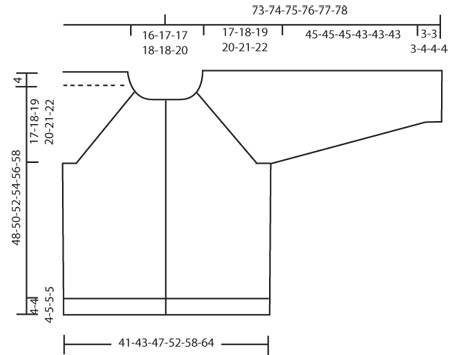
What can you do with our patterns? You can share DROPS patterns online, using the pattern original picture, materials, name and number. But you are NOT ALLOWED to reproduce the complete pattern digitally in any way. Yarn stores are welcome to use the DROPS pattern database to promote the sale of our assortment. You can print out our patterns, make as many copies as you’d like. The only thing we ask is that you don't make any changes / additions to the original printed document. And that the patterns according to the DROPS philosophy are given out to the consumers for free. Editorials that wish to publish our patterns in printed books or magazines can contact us for more information. The sale of garments based on DROPS patterns is permitted as long as they are sold as single items or per order. Further commercial use of the patterns is not permitted. It has to be clearly stated that the garment is made based on a design from DROPS DESIGN. The use of clothing labels of which DROPS DESIGN forms part is conditioned by the inclusion of the following text: “A DROPS DESIGN made by …..”. The use of DROPS photos for marketing purposes/sales is only permitted in connection with the use/sale of DROPS products. The photos may not be cut or edited and the logo should be clearly visible.
We reserve the right to withdraw the permission for use of our patterns at any time, notwithstanding the reason.
Each of our patterns has specific tutorial videos to help you.
These step-by-step tutorials might also help you:
Why is the knitting/crochet tension so important?
Knitting tension is what determines the final measurements of your work, and is usually measured per 10 x 10 cm. It is provided like so: number of stitches in width x number of rows in height - eg: 19 stitches x 26 rows = 10 x 10 cm.
The knitting tension is very individual; some people knit/crochet loosely while others work tightly. You adjust the knitting tension with the needle size, which is why the suggested needle size only serve as a guide! You need to adjust this (up or down) to ensure that YOUR knitting tension matches the knitting tension provided in the pattern. If you work with a different knitting tension than provided you will have a different yarn consumption, and your work will have different measurements than what the pattern suggests.
The knitting tension also determines which yarns can replace each other. As long as you achieve the same knitting tension you can replace one yarn with another.
See DROPS lesson: How to measure your tension/gauge
See DROPS video: How to make a gauge tension swatch
How do I know how many balls of yarn I need?
The required amount of yarn is provided in grams, eg: 450 g. To calculate how many balls you’ll need you first need to know how many grams are in 1 ball (25g, 50g or 100g). This information is available if you click on the individual yarn quality on our pages. Divide the amount required with the amount of each ball. For example, if each ball is 50g (the most common amount), the calculation will be as follows: 450 / 50 = 9 balls.
Can I use a different yarn than what the pattern suggests?
The important thing when changing from one yarn to another is that the knitting/crochet tension remains the same. This is so that the measurements of the finished piece will be the same as on the sketch provided. It is easier to achieve the same knitting tension using yarns from the same yarn group. It is also possible to work with multiple strands of a thinner yarn to achieve the knitting tension of a thicker one. Please try our yarn converter. We recommend you to always work a test swatch.
Please NOTE: when changing yarn the garment might have a different look and feel to the garment in the photo, due to individual properties and qualities of each yarn.
See DROPS lesson: Can I use a different yarn than the one mentioned in the pattern?
What are the yarn groups?
All our yarns are categorised into yarn groups (from A to F) according to thickness and knitting tension – group A contains the thinnest yarns and group F the thickest. This makes it easier for you to find alternative yarns to our patterns, should you wish to switch yarn. All yarns within the same group have a similar knitting tension and can easily replace each other. However, different yarn qualities have different structures and properties which will give the finished work a unique look and feel.
How do I use the yarn converter?
At the top of all our patterns you’ll find a link to our yarn converter, which is a helpful tool should you wish to use a different yarn than suggested. By filling in the yarn quality you wish to replace, the amount (in your size) and number of strands, the converter will present good alternative yarns with the same knitting tension. Additionally it will tell you how much you’ll require in the new qualities and whether you’ll need to work with multiple strands. Most skeins are 50g (some are 25g or 100g).
If the pattern is worked with multiple colours, every colour will have to be converted separately. Similarly, if the pattern is worked with several strands of different yarns (for example 1 strand Alpaca and 1 strand Kid-Silk) you will have to find alternatives for each, individually.
Why do you show discontinued yarns in the patterns?
Since different yarns have different qualities and textures we have chosen to keep the original yarn in our patterns. However, you can easily find options among our available qualities by using our yarn converter, or simply pick a yarn from the same yarn group.
It is possible that some retailers still have discontinued yarns in stock, or that someone has a few skeins at home that they would like to find patterns for.
The yarn converter will provide both alternative yarn as well as required amount in the new quality.
What size should I knit?
If you think it's hard to decide what size to make, it can be a good idea to measure a garment you own already and like the size of. Then you can pick the size by comparing those measures with the ones available in the pattern's size chart.
You'll find the size chart at the bottom of the pattern.
See DROPS lesson: How to read size chart
Why do I get the wrong knitting tension with the suggested needle size?
The needle size provided in the pattern serves only as a guide, the important thing is to follow the knitting tension. And since knitting tension is very individual, you will have to adjust the needle size to ensure that YOUR tension is the same as in the pattern – maybe you’ll have to adjust 1, or even 2 needle sizes, up or down to achieve the correct tension. For this, we recommend that you work test swatches.
Should you work with a different knitting tension than the one provided, the measurements of the finished garment might deviate from the measurement sketch.
See DROPS lesson: How to measure your tension/gauge
See DROPS video: How to make a gauge tension swatch
Why is the pattern worked top-down?
Working a garment top-down provides more flexibility and room for personal adjustment. For example it is easier to try the garment on while working, as well as making adjustments to length of yoke and shoulder caps.
The instructions are carefully explaining every step, in the correct order. Diagrams are adjusted to the knitting direction and are worked as usual.
How do I work according to a knitting diagram?
The diagram depicts all rows/rounds, and every stitch seen from the right side. It is read from bottom to top, from right to left. 1 square = 1 stitch.
When working back and forth, every other row is worked from the right side and every other row is worked from the wrong side. When working from the wrong side, the diagram will have to be worked reversed: from left to right, knit stitches are purled, purl stitches are knit etc.
When working in the round every round is worked from the right side and the diagram are worked from right to left on all rounds.
See DROPS lesson: How to read knitting diagrams
How do I work according to a crochet diagram?
The diagram depicts all rows/rounds, and every stitch seen from the right side. It is worked from bottom to top, from right to left.
When working back and forth every other row is worked from the right side: from right to left and every other row is worked from the wrong side: from left to right.
When working in the round, every row in the diagram are worked from the right side, from right to left.
When working a circular diagram you start in the middle and work your way outwards, counter clockwise, row by row.
The rows usually start with a given number of chain stitches (equivalent to the height of the following stitch), this will either be depicted in the diagram or explained in the pattern.
See DROPS lesson: How to read crochet diagrams
How do I work several diagrams simultaneously on the same row/round?
Instructions for working several diagrams after each other on the same row/round, will often be written like so: “work A.1, A.2, A.3 a total of 0-0-2-3-4 times". This means you work A.1 once, then A.2 is worked once, and A.3 is repeated (in width) the number of times provided for your size – in this case like so: S = 0 times, M = 0 times, L=2 times, XL= 3 times and XXL = 4 times.
The diagrams are worked as usual: begin with the first row in A.1, then work the first row in A.2 etc.
See DROPS lesson: How to read knitting diagrams
See DROPS lesson: How to read crochet diagrams
Why are the sleeves shorter in larger sizes?
The total width of the garment (from wrist-to-wrist) will be larger in the larger sizes, despite the actual sleeves being shorter. The larger sizes have longer sleeve caps and wider shoulders, so there will be a good fit in all sizes.
Where on the garment is the length measured?
The measurement sketch/schematic drawing provides information regarding the full length of the garment. If it’s a jumper or a jacket the length is measured from the highest point on the shoulder (usually closest to the neckline), and straight down to the bottom of the garment. It is NOT measured from the tip of shoulder. Similarly, the length of yoke is measured from the highest point on the shoulder and down to where yoke is split into body and sleeves.
See DROPS lesson: How to read a schematic drawing
What is a repeat?
Diagrams are often repeated on the round or in height. 1 repeat is the diagram the way it appears in the pattern. If it says to work 5 repeats of A.1 in the round, then you work A.1 a total of 5 times after/next to each other in the round. If it says to work 2 repeats of A.1 vertically/in height you work the entire diagram once, then begin again at the start and work the entire diagram one more time.
Why does the piece start with more chain stitches than it’s worked with?
Chain stitches are slightly narrower than other stitches and to avoid working the cast-on edge too tight, we simply chain more stitches to begin with. The stitch count will be adjusted on the following row to fit the pattern and measurement sketch.
Why increase before the rib edge when the piece is worked top-down?
The rib edge is more elastic and will contract slightly compared to, for example, stocking stitch. By increasing before the rib edge, you avoid a visible difference in width between the rib edge and the rest of the body.
Why increase in the cast-off edge?
It’s very easy to cast off too tightly, and by making yarn overs while casting off (and simultaneously casting these off) you avoid a too tight cast off edge.
See DROPS video: How to bind off with yarn overs (yo)
How do I increase/decrease on every 3rd and 4th row/round alternately?
To achieve an even increase (or decrease) you can increase on, for example: every 3rd and 4th row alternately, like so: work 2 rows and increase on the 3rd row, work 3 rows and increase on the 4th. Repeat this until the increase is complete.
See DROPS lesson: Increase or decrease 1 st on every 3rd and 4th row alternately
How can I work a jacket in the round instead of back and forth?
Should you prefer to work in the round instead of back and forth, you may of course adjust the pattern. You’ll need to add steeks mid-front (usually 5 stitches), and follow the instructions. When you would normally turn and work from the wrong side, simply work across the steek and continue in the round. At the end you’ll cut the piece open, pick up stitches to work bands, and cover the cut edges.
See DROPS video: How to knit steeks and cut open
Can I work a jumper back and forth instead of in the round?
Should you prefer to work back and forth instead of in the round, you may of course adjust the pattern so you work the pieces separately and then assemble them at the end. Divide the stitches for the body in 2, add 1 edge stitch in each side (for sewing) and work the front and back pieces separately.
See DROPS lesson: Can I adapt a pattern for circular needles into straight needles?
Why is the pattern slightly different than what I see in the photo?
Pattern repeats can vary slightly in the different sizes, in order to get the correct proportions. If you’re not working the exact same size as the garment in the photo, yours might deviate slightly. This has been carefully developed and adjusted so that the complete impression of the garment is the same in all sizes.
Make sure to follow instructions and diagrams for your size!
How do I make a women’s size garment into a men’s size one?
If you have found a pattern you like which is available in women’s size it’s not very difficult to convert it to men’s size. The biggest difference will be the length of sleeves and body. Start working on the women size that you think would fit across the chest. The additional length will be worked right before you cast off for the armhole/sleeve cap. If the pattern is worked top-down you can add the length right after the armhole or before the first decrease on sleeve.
Regarding additional yarn amount, this will depend on how much length you add, but it is better with a skein too many than too few.
How do I prevent a hairy garment from shedding?
All yarns will have excess fibres (from production) that might come off as lint or shedding. Brushed yarns (ie hairier yarns) have more of these loose, excess fibres, causing more shedding.
Shedding also depends on what is worn under or over the garment, and whether this pulls at the yarn fibres. It’s therefore not possible to guarantee that there will be no shedding
Below are some tips on how to get the best result when working with hairier yarns:
1. When the garment is finished (before you wash it) shake it vigorously so the looser hairs come off. NOTE: do NOT use a lint roller, brush or any method that pulls at the yarn.
2. Place the garment in a plastic bag and put it in your freezer - the temperature will cause the fibres to become less attached to each other, and excess fibres will come off easier.
3. Leave in the freezer for a few hours before taking it out and shaking it again.
4. Wash the garment according to the instructions on the yarn label.
Why does my garment pill?
Pilling is a natural process that happens to even the most exclusive of fibers. It's a natural sign of wear and tear that is hard to avoid, and that is most visible in high friction areas of your garment like a sweater's arms and cuffs.
You can make your garment look as new by removing the pilling, using a fabric comb or a pill/lint remover.
In the meantime, you can read the questions and answers that others have left to this pattern or join the DROPS Workshop on Facebook to get help from fellow knitters/crocheters!
You might also like...
Daphne Cardigan |
|
|
|
|
DROPS jacket in ”Alaska” with English Rib and raglan finish. Size: S to XXXL
DROPS 104-33 |
|
|
Knitting gauge: 16 sts x 27 rows English rib = 10 x 10 cm [4" x 4"] English rib: Knit English rib as follows: 1st row (RS): * K1, P1 *, repeat from *-*. 2nd row back and front pieces: *P1, yo, slip 1 sts as if to K*, repeat from*-*. 2nd row sleeve: *Yo, slip 1 sts as if to K, P1*, repeat from*-*. 3rd row: *K1, P tog yo and lose sts from last row*, repeat from *-*. Continuing, repeat 2nd and 3rd rows. Garter st: Knit all rows. Decreasing tip (applies to raglan): Dec as follows from RS: Start 2 sts before sts with marking thread: K2 tog, K1 (marking thread or stitch marker placed in this sts), slip 1 st as if to knit, K1, psso. NOTE: Due to English rib it will sometimes be YO and lose sts from previous row that is bind off. Yo and lose sts are then counted as 1. Buttonhole: Bind off for buttonhole on right front band. 1 buttonhole = bind off 3rd sts on front band. On next row cast on 1 new sts over bind off sts. Bind off for buttonhole when piece measures: Size S: 2, 10, 19, 27 and 36 cm [3/4"-4"-7½"-10⅝" and 14 ¼"]. Size M: 2, 10, 17, 24, 31 and 38 cm [3/4"-4"-6 ¾"-9½"-12 ¼" and 15"]. Size L: 2, 10, 17, 25, 33 and 40 cm [3/4"-4"-6 ¾"-9 ¾"-13" and 15¾"]. Size XL: 3, 11, 18, 26, 34 and 41 cm [1⅛"-4⅜"-7"-10 ¼"-13⅜" and 16⅛"]. Size XXL: 3, 11, 19, 27, 35 and 43 cm [1⅛"-4⅜"-7½"-10⅝"-13 ¾" and 17"]. Size XXXL: 2, 10, 17, 24, 31, 38 and 45 cm [3/4"-4"-6 ¾"-9½"-12 ¼",15" and 17 ¾"]. Bind off for last buttonhole on neck edge after sts are knit up around neck. Back and front pieces: Knit piece back and forth on circular needles from mid front. Cast on 165-180-198-216-240-264 sts (includes 5 edge sts on each side mid front) on needles size 5 mm [US 8] with Alaska. Then knit as follows (1st row = RS): 5 front edge sts (K these on each row until completed measurement), * K2, P1 *, repeat from *-* and finish with the 2 K and front edge sts. Continue with K over K and P over P until piece measures 4-4-4-5-5-5 cm [1½"-1½"-1½"-2"-2"-2"]. Remember to bind off for button holes – see explanation above. Now knit 2 rows garter sts at the same time as dec 26-33-39-41-45-49 sts on 1st row evenly = 139-147-159-175-195-215 sts (do not dec on front edge sts). Continue in English rib – see explanation above - until complete measurement. Remember knitting gauge! When piece measures 31-32-33-34-35-36 cm [12 ¼"-12½"-13"-13⅜"-13 ¾"-14 ¼"] knit next row as follows: 5 front edge sts, 28-30-33-37-42-47 sts English rib as previously, bind off 8 sts (= armhole), 57-61-67-75-85-95 sts English rib as earlier, bind off 8 sts (= armhole), 28-30-33-37-42-47 sts English rib as earlier and 5 front edge sts = 123-131-143-159-179-199 sts in total on needle. Leave piece to one side and knit sleeves. Sleeve: Knit piece back and forth on needle. Cast on 44-47-50-53-56-56 sts (incl 1 edge sts on each side) on needle size 5 mm [US 8] with Alaska. Knit Rib K2/P1 with 1 edge sts on each side until piece measures 3-3-3-4-4-4 cm [1⅛"-1⅛"-1⅛"-1½"-1½"-1½"]. Now knit 2 rows garter sts at the same time as dec 6-7-8-9-10-10 sts on 1st row evenly = 38-40-42-44-46-46 sts. Continue English rib to finished measurement. When piece measures 6 cm [2⅜"] inc 1 sts on each side on every 4 -4 -4 -3.5- 3.5 -3 cm [1½"-1½"-1½"-1 ¼"-1 ¼"-1⅛"] 11-11-11-12-12-13 times in total = 60-62-64-68-70-72 sts (knit new sts into English rib continuously). When piece measures 48-48-48-47-47-47 cm [19"-19"-19"-18½"-18½"-18½"] bind off 5 sts on each side = 50-52-54-58-60-62 sts left on row. Leave piece to one side, knit another sleeve. Yoke: Slip sleeves onto same circular needle as back and front pieces where sts are bind off for armhole = 223-235-251-275-299-323 sts. Insert 1 marking thread or stitch marker in all transition between sleeve and back and front pieces. (Insert marking thread or stitch marker in first and last sts on sleeve) = 4 marking threads or stitch marker. Knit 1 round English rib as earlier, but knit stockinette sts over 3 sts in each transition between back and front pieces and sleeves (i.e. with marking thread or stitch marker being the middle sts of the 3 sts stockinette sts). Continue as follows at the same time as starting dec for raglan: Dec 1 sts on each side of 3 stockinette sts (= 8 dec) – read Decreasing tips. Dec on every 4th row 7 times and on every 2nd row 11-12-13-15-16-17 times. At the same time when piece measures 43-45-47-48-50-52 cm [17"-17 ¾"-18½"-19"-19 ¾"-20½"] slip 6-6-7-8-8-12 sts mid front on 1 thread or stitch holder for neck. Continuing bind off 2 sts 2-3-4-4-7-7 times to shape neckline and 1 sts 4-3-2-3-0-0 times. At completion of all dec for raglan there are 51-53-57-61-71-79 sts left on row. Piece measures approx 52-54-56-58-60-62 cm [20½"-21 ¼"-22"-22 ¾"-23⅝"-24⅜"] to shoulder. Neck: Pick up 1 sts from RS in each sts (incl sts on thread or stitch holder) on front piece where sts are bind off for neck = 79-83-91-99-115-131 sts. K1 row from WS at the same time as dec 3-5-11-13-27-39 sts evenly = 76-78-80-86-88-92 sts. Knit 6 rows garter sts – see explanation above - at the same time, on 1st row bind off for 1 buttonhole above the others on right front edge. Bind off loosely. Assembly: Sew tog sleeve seams within 1 edge st. Sew openings under arms. Sew in buttons. Belt: Cast on 10 sts on needle size 5 mm [US 8] with Alaska. Knit garter sts but slip first stitch on each row as if to knit and P last sts on each row (this is done to ensure a neat edge). When belt measures approx 170 to 200 cm [66"-80"] bind off loosely. |
|

|
|
|
Have you made this or any other of our designs? Tag your pictures in social media with #dropsdesign so we can see them! Do you need help with this pattern?You'll find tutorial videos, a Comments/Questions area and more by visiting the pattern on garnstudio.com. © 1982-2024 DROPS Design A/S. We reserve all rights. This document, including all its sub-sections, has copyrights. Read more about what you can do with our patterns at the bottom of each pattern on our site. |
With over 40 years in knitting and crochet design, DROPS Design offers one of the most extensive collections of free patterns on the internet - translated to 17 languages. As of today we count 304 catalogs and 11422 patterns - 11417 of which are translated into English (US/in).
We work hard to bring you the best knitting and crochet have to offer, inspiration and advice as well as great quality yarns at incredible prices! Would you like to use our patterns for other than personal use? You can read what you are allowed to do in the Copyright text at the bottom of all our patterns. Happy crafting!








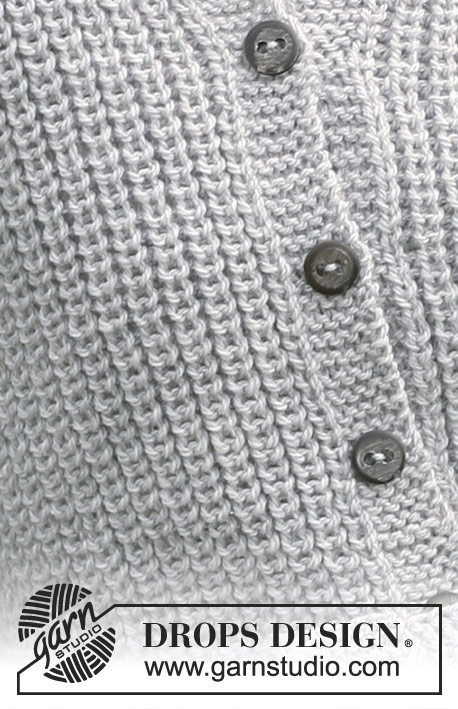


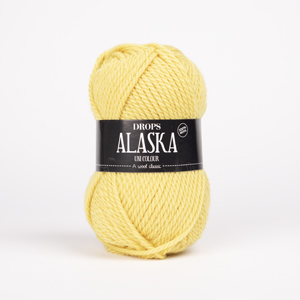


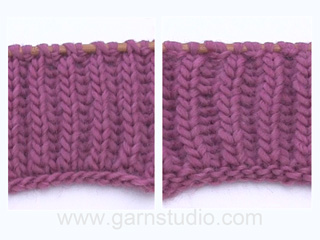

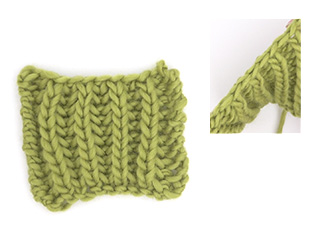
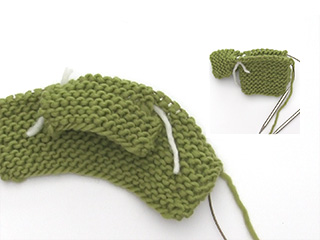

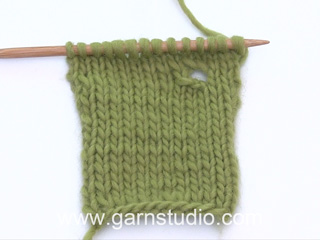





































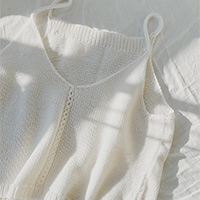

Comments / Questions (12)
Wat bedoelen ze met 2de nld voorpand en 2de nld achterpand? Welke 2 nld moet ik nu herhalen
12.05.2021 - 19:43DROPS Design answered:
Dag Lauryssens,
Oeps... een foutje met vertaling van het patroon. De eerste beschrijving voor de tweede naald is voor het achterpand en de voorpanden en de tweede beschrijving voor de mouwen. Het is nu aangepast.
15.05.2021 - 14:37When the pattern says to continue in English rib after two garter stitch rows, do I knit a K1, P1 row first, then repeat rows 2 and 3? Or do I start the English Rib with row 2? Also, the English rib shown in the pattern is worked over an even number of stitches. But after decreasing in the garter stitch rows, there is an uneven number of stitches. How do I knit the pattern with an uneven number of stitches?
19.12.2020 - 02:53Möchte gerne diese Jacke in big Merino stricken, muss ich etwas besonderes beachten ? Weil diese Wolle sehr elastisch ist ?
05.11.2018 - 15:31DROPS Design answered:
Liebe Frau Kraft, am besten stricken Sie zuerst eine Maschenprobe und waschen Sie sie, dann die Massen prüfen, am besten mit dünneren Nadeln stricken, aber zwar wird das Ergebnis unterschiedlich sein, da beide Wolle unterschiedlich sein. Nehmen Sie Kontakt mit Ihrem DROPS Laden auf, sie werden Ihnen auch gerne weiterhelfen und vielleicht noch eine andere Alternative vorschlagen - auch telefonisch oder per E-mail. Viel Spaß beim stricken!
05.11.2018 - 16:06Ik heb een vraag over patroon 104-33 vest met raglan mouw: wat betekent het stippellijntje in het patroon? (linkerschouder). a Alvast bedankt voor uw reactie
16.05.2017 - 15:14DROPS Design answered:
Dit is de hoogte vanaf waar de raglanlijn stopt tot de bovenkant van de schouder.
17.05.2017 - 11:30Jeg strikker ermer på strømpe- og rundpinner med liketall og halvpatent som rettsiden. 1p. (retten): * 1 r/ 1 vr *, gjenta fra *-*. 2.p : * 1 r, 1 kast, ta 1 m løst av p som om den skulle strikkes vr*, gjenta fra *-*. 3.p: * 1 r, (kast + løs m fra forrige p) strikkes vr sm *, gjenta fra *-*. Gjenta 2. og 3.p. Øk 1 maske i beg og slutten av 1.m hver 6.p. Strikk slik at det fortsatt blir halvpatent rundt, dvs annenhv. øking før en rettmaske og annenhv øking før en vr m.
24.03.2015 - 13:12Tack för snabbt svar. Inkl. kan också stå för inkluderar och då inräknas ju kantmaskorna i de 165. Mvh E-M
21.05.2013 - 17:33DROPS Design answered:
Du har ingen kantmaskor paa denne kofta - kun de 5 framkantsm i varje sida. Dvs, du stickar 2 rm, 1 am over 153 och afslutar med 2 rm och 5 framkantsm.
20.06.2013 - 12:11Tja, inkl. brukar ju betyda inklusive, eller?
19.05.2013 - 18:39Om jag lägger upp 165 m i stl S, (inkl. 5 framk.maskor i varje sida mot mitt fram)så är min fråga: inkluderas dessa framkantsmaskor i de 165 eller lägger jag till dom utöver?
19.05.2013 - 08:24DROPS Design answered:
De 5 framkantsm inkluderas i de 165 m. Lycka till!
20.05.2013 - 08:58Lonny Mortensen wrote:
Meget flot og godt tænkt i kompossitionen. Venlig hilsen L. Mortensen
16.08.2007 - 10:34Valkyrja wrote:
As a novice sweater knitter I love this sweater for it's simple elegance and would LOVE to have this pattern made available for my next attempt.
10.07.2007 - 04:02